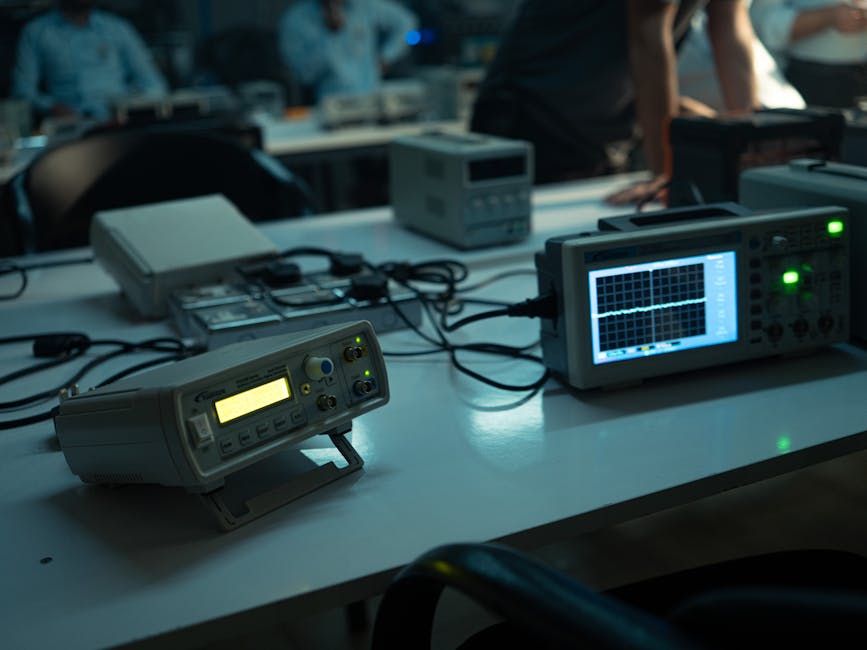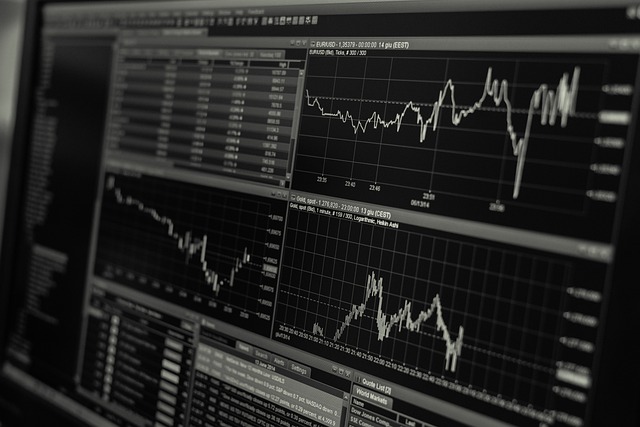Why Technical Analysis Matters
Technical analysis (TA) is the backbone of many trading strategies—whether you’re deep into crypto or sticking with traditional markets like stocks or forex. While fundamental analysis digs into the ‘why’ behind a price (like earnings reports or macro trends), technical analysis is all about the ‘what now.’ It looks at price charts and volume trends to help traders make sense of market behavior in real time.
In crypto, where market hours never stop and news can move prices within minutes, TA becomes even more crucial. Unlike legacy markets, where quarterly reports might steer a stock, crypto often moves on sentiment, hype, or fear. Technical tools give traders a way to cut through that noise and react faster to shifts.
That said, price movements don’t always match up with what’s happening behind the scenes. A token with strong fundamentals can fall short if technical signals show weakness. On the flip side, a weak asset can pump off a bullish pattern or sudden volume spike. That disconnect is why many traders combine both approaches: use fundamentals to choose what to trade, and technicals to decide when.
For beginners, TA doesn’t have to be intimidating. Start simple. Learn to read basic charts. Understand where support or resistance lies. Grasp what a trend looks like. You don’t need to master it all overnight, but with repetition, patterns start to jump out. TA won’t predict the future, but it’ll help you stop guessing blindly—and start trading with a strategy.
Core Concepts You Need to Know
Support & Resistance Levels: What They Are and Why They Matter
Support and resistance are the backbone of technical analysis. Think of support as the price level where buyers consistently show up to stop a fall, while resistance is where sellers push back and cap an upward move. When a price hits these zones repeatedly and bounces off, traders take notice. Break through either one, and the market often shifts—either into a rally or a drop. These levels help you understand where price might pause, reverse, or accelerate, giving you a better shot at timing your entries and exits.
Trend Lines: Spotting Upward and Downward Momentum
Trend lines connect the dots—literally. By drawing straight lines between key price highs or lows, you get a sense of market direction. An upward trend line, drawn along higher lows, shows strength. A downward trend, drawn along lower highs, signals pressure. They’re dead simple and wildly useful. Spotting a break in a well-respected trend line? That’s your early warning that momentum might be shifting.
Volume: Interpreting Buying/Selling Strength
Volume tells you how much interest is behind a price move. A breakout with weak volume? Weak signal. A breakout with a surge in volume? That’s real momentum. Volume spikes often show major buying or selling pressure before price catches up. It’s not a flashy indicator, but knowing how to read it sets apart the reactive from the prepared.
Mastering these three concepts arms you with clarity at a glance. They won’t make you a pro overnight, but they will keep you from trading blind.
Moving Averages (MA & EMA): Smoothing Out the Noise
Markets are noisy. Prices jump up and down every second, and that mess can make it tough to see what’s actually happening. That’s where moving averages come in. A simple moving average (SMA) looks at the average price over a set period—like the last 20 days—and draws a smooth line so you can spot the general trend without the static. An exponential moving average (EMA) does the same thing but gives more weight to recent prices. That makes it react faster to changes—sometimes a good thing, sometimes not, depending on your strategy.
Traders use MAs to confirm trends and find signals. If the price crosses above a moving average line, it could mean the uptrend’s gaining steam. Crosses below? Might be time to reassess.
Relative Strength Index (RSI): Measuring Overbought or Oversold Conditions
RSI cuts through the guesswork when it comes to market momentum. It’s a number between 0 and 100. Above 70? The asset might be overbought—buyers are pushing too hard, and a pullback could be coming. Below 30? It might be oversold—panic selling, overshooting, and a possible recovery on the horizon.
You won’t rely on RSI alone. But it’s a solid way to check whether the market’s too hot or too cold, and whether it’s time to lean in—or step back and wait.
MACD: Identifying Trend Reversals
MACD—short for Moving Average Convergence Divergence—helps spot changes in momentum. It takes two EMAs (usually 12-day and 26-day), subtracts one from the other to get the “MACD line,” and compares that to a signal line (often a 9-day EMA of the MACD line). When the MACD crosses above the signal line, that can point to a bullish reversal. Below? Bearish signs ahead.
It also includes a histogram—a visual of the distance between the MACD and signal line. Wider bars mean stronger momentum. Traders watch this to time entries and exits a bit better, though like any tool, MACD isn’t bulletproof. It works best when used with other confirmations.
These three indicators—MA/EMA, RSI, and MACD—form the backbone of many beginner strategies. Learn how they behave together, and you’re already ahead of most people just guessing at the charts.
Chart Patterns to Watch
Understanding chart patterns is a foundational element of technical analysis. These visual formations can signal potential price movements, making them powerful tools for spotting entry and exit points.
Common Bullish Patterns
Bullish patterns suggest that prices may soon rise. These are especially important during market consolidations or trend reversals.
- Ascending Triangle: Flat top with higher lows—often leads to a breakout.
- Cup and Handle: A rounded bottom followed by a smaller dip—signals upside potential.
- Bull Flag: Short-term consolidation after a significant upward move—often continues the uptrend.
Common Bearish Patterns
Bearish patterns indicate possible downward price movement. Recognizing these can help traders exit before losses deepen.
- Descending Triangle: Flat bottom with lower highs—suggests breakdown potential.
- Head and Shoulders: Three-peak formation with a lower central peak—often signals a trend reversal from up to down.
- Bear Flag: Minor upward consolidation during a downtrend—usually resumes lower.
How to Spot Breakouts and Breakdowns
Breakout and breakdown signals occur when the price moves beyond support or resistance levels with volume.
Tips for spotting breakouts:
- Look for consolidation patterns near resistance
- Confirm breakouts with a spike in volume
- Use trendlines and moving averages for added confidence
Tips for spotting breakdowns:
- Watch for weakening support levels
- Note declining volume during consolidation, then an abrupt surge on the move down
- Be cautious of false breakdowns—wait for confirmation
Practice Makes Proficient
Chart patterns aren’t crystal balls. They show probabilities, not certainties.
- Misreading patterns is common for beginners—similar shapes don’t always yield identical results
- Avoid trading in isolation—pair pattern analysis with indicators like volume, RSI, or MACD
- Use demo accounts or historical charts to gain pattern recognition experience before applying real capital
Pattern recognition is a skill built over time. The more examples you study and track, the sharper your intuition and precision will become.
Tools of the Trade
If you’re just starting out with technical analysis, your charting platform matters more than you think. A clunky interface can slow you down. A bloated one can overwhelm you. For beginners, simplicity with power is the sweet spot.
Start with TradingView—it’s the go-to for a reason. Free to start, tons of community-shared indicators, and clean design. If you’re more crypto-focused, consider Coinigy or Binance’s in-platform charts. They don’t take long to learn, and you’ll save clicks on trades.
Once you’ve picked your platform, tweak your view. Strip away what you don’t need: tone down background colors, dim the gridlines, and use a dark mode if it helps reduce eye fatigue. Choose just a few indicators—MACD, RSI, maybe a moving average—and make each one easy to read. Less noise = better decisions.
Now use alerts like a second set of eyes. Horizontal price alerts for breakouts, indicator-based ones for signals you care about (e.g. RSI crossing 70). Most platforms let you set and forget them. Drawing tools—trendlines, support zones, Fibonacci levels—are your visual anchors. Use them to turn your chart into a battlefield map, not a chaotic canvas.
The goal isn’t a beautiful chart. It’s a useful one.
The Psychology Behind the Charts
Market sentiment is the invisible hand moving prices—it’s how traders collectively feel about an asset. Optimism drives buying. Fear fuels selling. You might not see mood swings in the headlines, but they show up in the charts. Sudden spikes in volume, sharp candles, and false breakouts? Often that’s emotion, not logic.
This becomes dangerous when herd behavior kicks in. Most people don’t want to miss out or be wrong. So when a coin rockets, traders pile in without a plan. When it drops, the panic spreads faster than reason. This leads to irrational trades and blown-up accounts. If you’re chasing hype or selling in fear, you’re not investing—you’re reacting.
That’s why discipline beats prediction. The best traders don’t guess what’s next—they manage what’s now. They follow structure. Stop losses are in place, risk is defined, and they stick to the plan. Technical analysis gives you signals, but mindset decides whether you use them well. Master the mental game, and the charts start making more sense.
Common Mistakes to Avoid
Getting into technical analysis is exciting—charts, indicators, and tools everywhere. That’s also what trips people up.
First mistake? Overloading your screen with too many indicators. A common rookie move is stacking RSI, MACD, Bollinger Bands, Fibonacci levels, and then some—hoping to find clarity in clutter. But more tools don’t mean better signals. Often, they just give you conflicting data and analysis paralysis. Start simple. Master one or two indicators before adding more.
Next, ignoring the broader market context. A great chart setup means little if there’s major news shaking the market. Technical signals may tell you it’s time to go long, but a sudden Fed announcement or regulatory change in crypto can flip the entire narrative. Technicals matter—but they don’t exist in a vacuum.
And finally: jumping in without a tested strategy. Reading a few articles or watching a couple videos isn’t enough. You need a plan—and more importantly, a plan you’ve tested, even if just on a demo account. Blind trades based on hunches or flashy setups rarely end well. Backtest your approach. Build confidence through repetition.
For more on sidestepping common traps, check out Crypto Day Trading Strategies and Common Mistakes.
Final Thoughts
Technical analysis isn’t magic—it’s a tool. It gives you a structured way to make sense of the chaos, but it won’t predict the market with 100% accuracy. Think of TA as headlights in a fog—not a GPS. It helps you see a few feet ahead, not the whole road.
The traders who last don’t just rely on chart patterns or signals. They back those up with risk management. That means using stop-losses, sizing positions wisely, and never betting the farm on a single play. A clean setup doesn’t mean a guaranteed win—so act like every trade could go wrong.
Also, patience wins. The market rewards consistency far more than it rewards flashes of brilliance. Keep learning, practice your strategy, log your trades, review your wins and losses. Show up often, stay intentional, and let time do the heavy lifting.

 Founder & Editor-in-Chief
Founder & Editor-in-Chief
